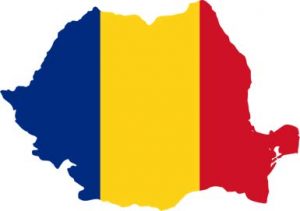
Even as other Eastern and Central European countries are making less room for religious minorities, Romania has encouraged its ethnic and religious minorities and their communities, “opening up new forms of cultural expression,” writes Ovidiu Oltean in the online journal Occasional Papers on Religion in Eastern Europe (39:7). Citing the major example of ethnic German Lutherans, Oltean writes that they have diminished in numbers yet their religious institutions, language, and German schools are reviving. This has been facilitated by a generous multicultural framework and the transnational return and migration between Transylvanian Saxons living in Germany and those living in Romania. But most unique has been the entrance and participation of ethnic Romanians (and to a less extent, ethnic Hungarians and Roma people) in ethnic German religious, educational, and religious institutions. Oltean’s fieldwork has “revealed the conversion of ethnic Romanians, which traditionally belong to the Orthodox or Greek Catholic (Uniate) [churches], to the Lutheran Church.” Although these reconversions started in the 1940s through mixed marriages, the democratization of religious and social life after 1989 and the resulting exit of ethnic Germans back to Germany has intensified this process. Oltean notes that the dearth of Germans in the schools they established in Transylvania were replaced by ethnic Romanians, Hungarians, and Roma.
“They entered these institutions, learned the German language and started to participate to various extents in the German cultural institutions, political organizations and local community organizations, and as it came naturally, in the religious milieu and Evangelical Lutheran organizations,” Oltean writes. Some of these conversions are the result of Romanians taking religious lessons in these schools, which are sponsored by the Lutheran Church. Although Lutheranism has suffered losses due to secularization and the emigration of ethnic Germans from Romania, “places such as Sibiu, one of the oldest cities in Transylvania, which has hosted for the last century and a half the bishopric headquarters of the Evangelical Lutheran Church, have managed to stop the dramatic decline and disappearance of Lutheran communities…This process of religious conversion has revived Lutheran communities and ensured the presence of…active German-speaking youth in the local organizations of the Evangelical Lutheran Church.” Small social networks and “working groups” structured around specific initiatives and projects (traveling between Germany and Romania), contribute to the conservation of Saxon church architecture and to the revival of Lutheran youth organizations.” One of these organizations took a derelict fortified church where all the ethnic Germans have left and transformed it into a youth center and hostel, where an annual program of cultural festivals is held. This infusion of new members and the revival of transnational ties has turned the Lutheran Church from only reproducing a religious and cultural identity into an “institution which actively contributes to the
building of a more participative and inclusive society.”
(Occasional Papers on Religion in Eastern Europe)
